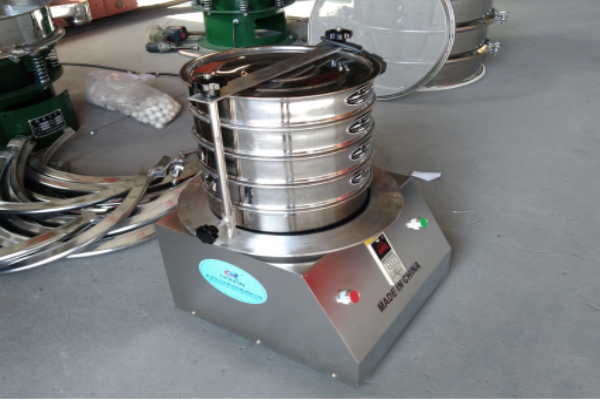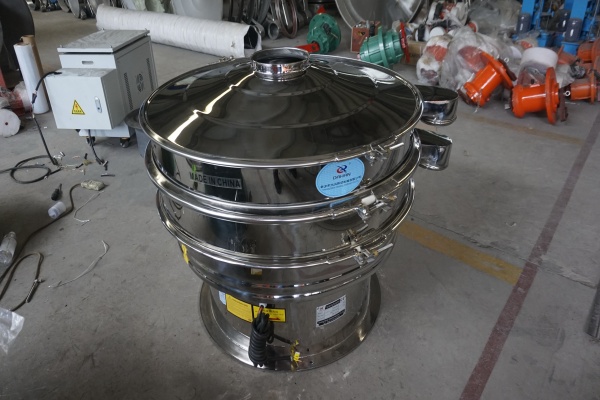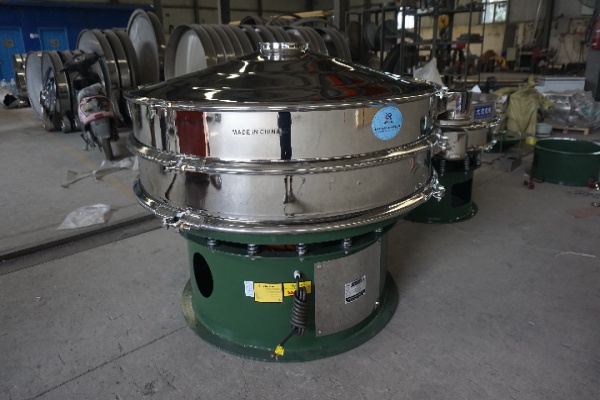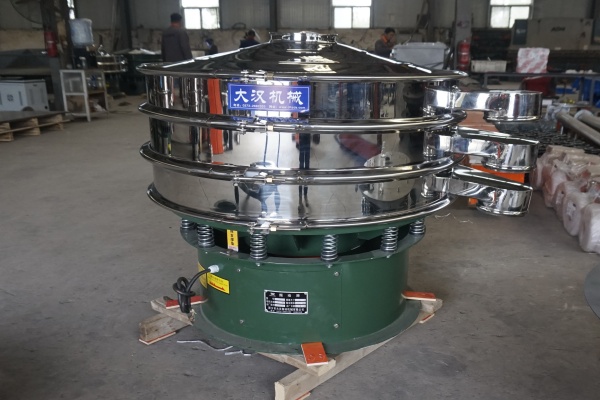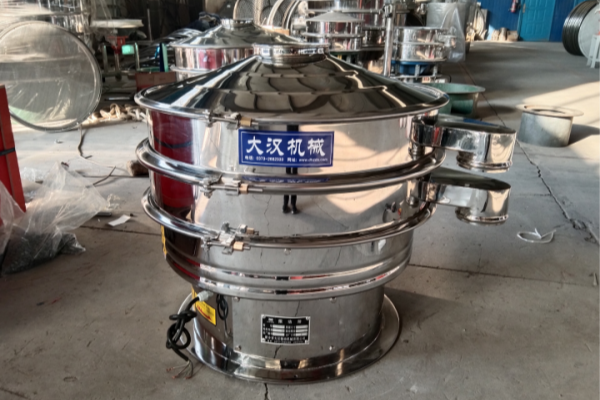
Vibro Sifter for Sieving Molybdenum Powder
Vibro sifters for sieving molybdenum powder come in various models, usually categorized by mesh sizes—covering 20-100 mesh, 100-325 mesh, 325-1250 mesh, etc.—to meet precise screening needs for different molybdenum powder particle sizes.
Name:Molybdenum powder Stainless steel Small vibration screen Sieve
Model:EXZS-800
Power:0.55~0.75kw
Mesh Size:2~500
Materials:Carbon Steel, SUS304, SUS316L
what is a vibro sifter for sieving molybdenum powder?
Vibro Sifter for Sieving Molybdenum Powder is a specialized vibrating screening device designed to classify, purify, and separate molybdenum powder by particle size. It works through high-frequency vibrations that make the powder pass through screens of specific mesh sizes, effectively removing impurities and ensuring uniform particle distribution, which is crucial for molybdenum powder applications in metallurgy, electronics, and other industries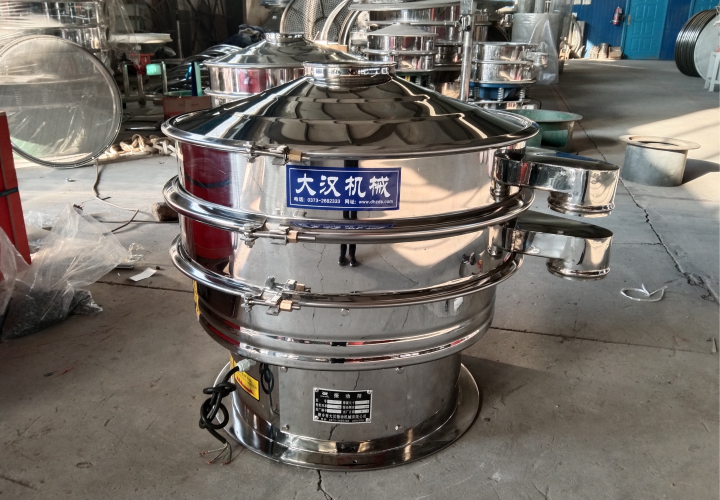
Enhanced throughput: The three-dimensional vibration design enables full contact between molybdenum powder and the sieve surface, with a sieving efficiency of over 95%, which is much higher than static or unidirectional vibro sifters, shortening the processing time for large batches.
Precise particle size control: Through adjustable amplitude and the selection of sieves from 20 mesh to 1250 mesh, the particle size deviation can be controlled within ±2%, which is crucial for applications such as semiconductor manufacturing.
Anti-clogging performance: Equipped with ultrasonic cleaning systems or rubber ball devices, it can prevent agglomerated molybdenum powder particles from clogging the sieve mesh, maintaining a stable processing capacity.
Material compatibility: The sieve surface is often made of 316L stainless steel or nickel, which is resistant to the slight reactivity of molybdenum powder, ensuring powder purity (no equipment contamination).
Easy maintenance: The modular design facilitates quick replacement of sieve meshes and cleaning, reducing downtime - which is crucial for continuous production lines.
What is the structure of the vibro sifter for sieving molybdenum powder ?
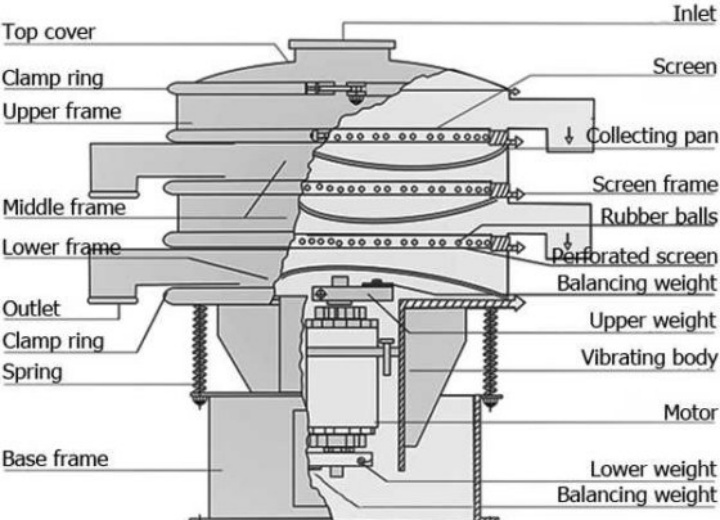
What is the working principle of the vibro sifter for sieving molybdenum powder ?
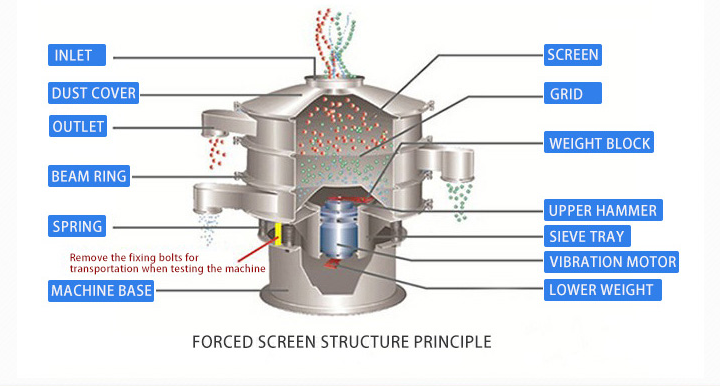
Vibro sifter for sieving molybdnum powder converts the rotational motion into three-dimensional vibration energy through an eccentric vibration motor. When the motor rotates, the eccentric block generates centrifugal force, forming vertical, horizontal and tangential vibrations. After the molybdenum powder enters from the feed port, it diffuses radially to the screen surface under the action of three-dimensional vibration. Fine particles enter the lower layer through the screen or collect the outlet, and large particles or impurities are pushed to the edge of the screen to discharge. At the same time, the optimized amplitude and frequency disperse the agglomerated particles, and the inclined screen surface and rubber ball are designed to prevent the screen from being blocked, achieving continuous and efficient screening.
| Parameter | Specification |
| Model | Customizable (e.g., VS-600, VS-800, VS-1000) |
| Screen Diameter | 600 mm, 800 mm, 1000 mm (or custom sizes) |
| Number of Screen Decks | 1 to 5 decks |
| Mesh Size | 20 µm to 500 µm (customizable) |
| Capacity | 100 kg/h to 2000 kg/h (depending on model) |
| Vibration Motor Power | 0.25 kW to 1.5 kW |
| Vibration Frequency | 1500 to 3000 RPM (adjustable) |
| Amplitude | 2 mm to 5 mm (adjustable) |
| Material of Construction | Stainless steel (304 or 316L) |
What are the common cases of vibro sifter for sieving molybdenum powder ?
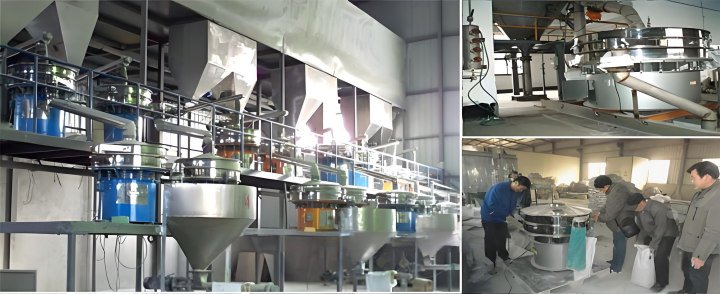
Vibro sifter for sieving molybdnum powder common cases include sieving 200-325 mesh molybdenum powder for aerospace turbine blades, 500-1250 mesh for electronics' semiconductor electrodes, 50-100 mesh as metallurgical alloying agents, and 100-200 mesh for chemical catalysts.
How to select sieving equipment according to different mesh sizes of molybdenum powder?
Molybdenum powder is classified into various mesh sizes according to particle diameter, and different particle size ranges require specifically configured vibro sifters to achieve optimal separation effects.Coarse molybdenum powder (20-100 mesh): Used in industries such as steelmaking (as an alloying agent), it requires single-layer or double-layer vibro sifters equipped with larger sieve holes (150-710 microns) to quickly remove large particle impurities.
Medium-fine molybdenum powder (100-325 mesh): Commonly used in electrode manufacturing, this particle size range requires 2-3 layer vibro sifters with medium-sized sieve holes (45-150 microns) and moderate vibration intensity to balance sieving speed and accuracy.
Ultra-fine molybdenum powder (325-1250 mesh): Critical for aerospace components and semiconductors, it requires high-precision vibro sifters equipped with 3-5 layers of sieves, fine mesh sieves (10-45 microns), and enhanced anti-clogging devices (such as ultrasonic or rubber ball cleaning systems) to prevent fine particles from clogging the sieve mesh.

What are the application fields of vibro sifter for sieving molybdenum powder?
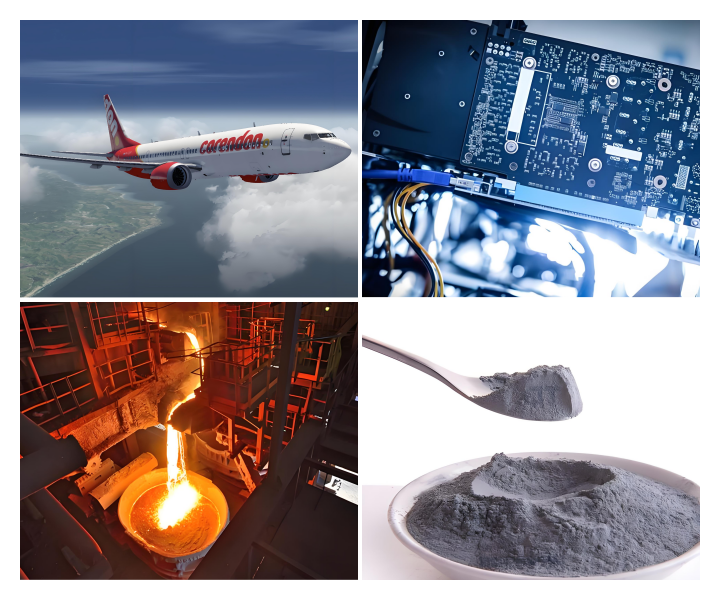
vibro sifter for sieving molybdenum powder are widely used in industries with strict requirements for molybdenum powder particle size control, including aerospace, electronics, metallurgy, and chemical engineering.
Aerospace: Molybdenum powder of 200-325 mesh is used in the manufacture of superalloys such as turbine blades and rocket nozzles. Vibro sifters can ensure that no coarse particles affect material strength.
Electronics industry: Ultra-fine molybdenum powder of 500-1250 mesh is a key raw material for semiconductor electrodes and thin film coatings. Vibro sifters can remove impurities that may cause conductivity problems.
Metallurgy industry: In the production of steel and superalloys, molybdenum powder of 50-100 mesh is used as an alloying agent. Vibro sifters can ensure uniform particle size, avoiding uneven alloy distribution.
Chemical industry: Molybdenum powder for catalysts requires strict particle size consistency (100-200 mesh). Vibro sifters can ensure that the surface area and reaction activity of the catalyst meet the standards.
